A STREET IN RABAT, MOROCCO, 1920 Sir John Lavery RA RSA RHA (1856-1941)
Signature: signed lower right, J Lavery; inscribed, A STREET IN RABAT / JOHN LAVERY / 1920, on reverse; also with inscription, 'To / Polymnia with many compliments / 14 Febry 1923', on reverse Medium: oil on canvasboard Dimensions: 24 by 34cm., 9.5 by 13.5in. A STREET IN RABAT/JOHN LAVERY/1920 and inscribed 'To/ Polymnia with many compliments / 14 Febry 1923' (See footnote no. 1) Letters written throughout the Great War indicate Lavery’s frustration at ... being unable to revisit Morocco. His restlessness was only partially mitigated by trips to naval bases in the winter of 1917-8, in part fulfilment of his commission as an Official War Artist. This role lasted into 1919 with the added task of painting ‘women’s work’ in the QMAAC field hospitals of northern France (see Whyte’s 28 November 2006, lot 95). The Laverys eventual return to Tangier in January 1920 was therefore long anticipated. (See footnote no. 2) Simply being back in the city after six years invigorated the painter, and his output, in a matter of weeks, was staggering. He recorded the ceremonial raising of the Moroccan flag over the former German Legation building in the market square and he also witnessed the passing of the funeral cortège of the Sultan’s envoy, his old friend, Sir Harry ‘Kaid’ MacLean. (See footnote no. 3) This was however, to be the Laverys’ most adventurous visit to Morocco. Accompanied by Mary Auras, the painter’s former German model and Nora Kerr Clarke, sister of the British Consul, they sailed down the coast of Spanish North Africa stopping at Rabat, before travelling overland by car to Marrakesh. (See footnote no. 4) Little sketches of the harbour and streets of the ancient city, including the infamous rue des femmes document the visit. (See footnote no. 5) Lavery was entranced by the ancient city, founded in 1197 by the Moorish conqueror of Spain, Abou Yussef Yacoub, known as ‘El Mansur’ – builder of the famous ‘Tower of Hassan’. A trading settlement dating back to the Romans, Rabat had been a separate state run by Barbary pirates before the founding of the modern Morocco. The narrow streets of the old city were dominated by the central mosque in the so-called ‘slipper market’, dating back to 1730. (See footnote no. 6) The city underwent a revival during the pre-war French Protectorate when the perspicacious General Lyautey moved the Moroccan capital from Fez to Rabat in order to block the possibility of German vessels using Moroccan ports in the event of war. The novelist, Edith Wharton who visited Rabat in Lyautey’s entourage, recoiled from the European ‘improvements’ that had been inflicted upon the old city, with their ‘hotel terraces and cafés and cinema-palaces’ blemishing ‘the beautiful native town’. She continues, ”Then, at the turn of a commonplace street, one comes upon it suddenly. The shops and cafés cease, the jingle of trams and the trumpeting of motor-horns die out, and here, all at once, are silence and solitude, and the dignified reticence of the windowless Arab house-fronts.” (See footnote no. 7) It was such a street that Lavery came upon when he painted the present work. Its location may now be determined by the pyramid-roofed tower rising above the houses, which stands in the Jardin des Oudayas, an old Moroccan garden restored by Lyautey. (See footnote no. 8) Nearly thirty years before, when he first visited Tangier, the artist instantly responded to the abstract shapes of whitewashed buildings dramatically cutting into the cloudless sky. Doorways were slabs of colour, and such focal points often attracted one or two carpet weavers, selling their wares to passers-by. It was a captivating experience for a painter anxious to wash the cold London studio light from his eyes. Kenneth McConkey August, 2009 Footnotes: 1. ‘Polymnia’ – variously spelt Polyhymnia, – was a Greek Muse of hymns and poetry, the mother of Orpheus. The significance for Lavery lies in the fact that he had painted a portrait of Mary Delmar Morgan in 19
A STREET IN RABAT, MOROCCO, 1920 Sir John Lavery RA RSA RHA (1856-1941)
Signature: signed lower right, J Lavery; inscribed, A STREET IN RABAT / JOHN LAVERY / 1920, on reverse; also with inscription, 'To / Polymnia with many compliments / 14 Febry 1923', on reverse Medium: oil on canvasboard Dimensions: 24 by 34cm., 9.5 by 13.5in. A STREET IN RABAT/JOHN LAVERY/1920 and inscribed 'To/ Polymnia with many compliments / 14 Febry 1923' (See footnote no. 1) Letters written throughout the Great War indicate Lavery’s frustration at ... being unable to revisit Morocco. His restlessness was only partially mitigated by trips to naval bases in the winter of 1917-8, in part fulfilment of his commission as an Official War Artist. This role lasted into 1919 with the added task of painting ‘women’s work’ in the QMAAC field hospitals of northern France (see Whyte’s 28 November 2006, lot 95). The Laverys eventual return to Tangier in January 1920 was therefore long anticipated. (See footnote no. 2) Simply being back in the city after six years invigorated the painter, and his output, in a matter of weeks, was staggering. He recorded the ceremonial raising of the Moroccan flag over the former German Legation building in the market square and he also witnessed the passing of the funeral cortège of the Sultan’s envoy, his old friend, Sir Harry ‘Kaid’ MacLean. (See footnote no. 3) This was however, to be the Laverys’ most adventurous visit to Morocco. Accompanied by Mary Auras, the painter’s former German model and Nora Kerr Clarke, sister of the British Consul, they sailed down the coast of Spanish North Africa stopping at Rabat, before travelling overland by car to Marrakesh. (See footnote no. 4) Little sketches of the harbour and streets of the ancient city, including the infamous rue des femmes document the visit. (See footnote no. 5) Lavery was entranced by the ancient city, founded in 1197 by the Moorish conqueror of Spain, Abou Yussef Yacoub, known as ‘El Mansur’ – builder of the famous ‘Tower of Hassan’. A trading settlement dating back to the Romans, Rabat had been a separate state run by Barbary pirates before the founding of the modern Morocco. The narrow streets of the old city were dominated by the central mosque in the so-called ‘slipper market’, dating back to 1730. (See footnote no. 6) The city underwent a revival during the pre-war French Protectorate when the perspicacious General Lyautey moved the Moroccan capital from Fez to Rabat in order to block the possibility of German vessels using Moroccan ports in the event of war. The novelist, Edith Wharton who visited Rabat in Lyautey’s entourage, recoiled from the European ‘improvements’ that had been inflicted upon the old city, with their ‘hotel terraces and cafés and cinema-palaces’ blemishing ‘the beautiful native town’. She continues, ”Then, at the turn of a commonplace street, one comes upon it suddenly. The shops and cafés cease, the jingle of trams and the trumpeting of motor-horns die out, and here, all at once, are silence and solitude, and the dignified reticence of the windowless Arab house-fronts.” (See footnote no. 7) It was such a street that Lavery came upon when he painted the present work. Its location may now be determined by the pyramid-roofed tower rising above the houses, which stands in the Jardin des Oudayas, an old Moroccan garden restored by Lyautey. (See footnote no. 8) Nearly thirty years before, when he first visited Tangier, the artist instantly responded to the abstract shapes of whitewashed buildings dramatically cutting into the cloudless sky. Doorways were slabs of colour, and such focal points often attracted one or two carpet weavers, selling their wares to passers-by. It was a captivating experience for a painter anxious to wash the cold London studio light from his eyes. Kenneth McConkey August, 2009 Footnotes: 1. ‘Polymnia’ – variously spelt Polyhymnia, – was a Greek Muse of hymns and poetry, the mother of Orpheus. The significance for Lavery lies in the fact that he had painted a portrait of Mary Delmar Morgan in 19



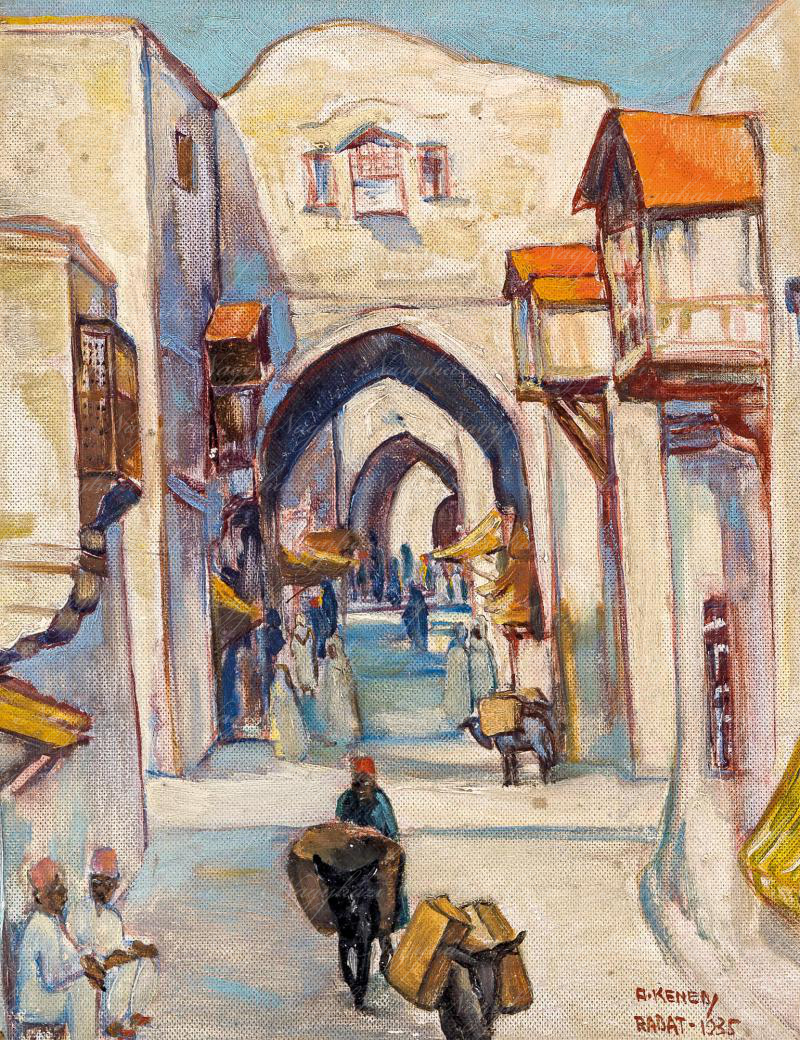



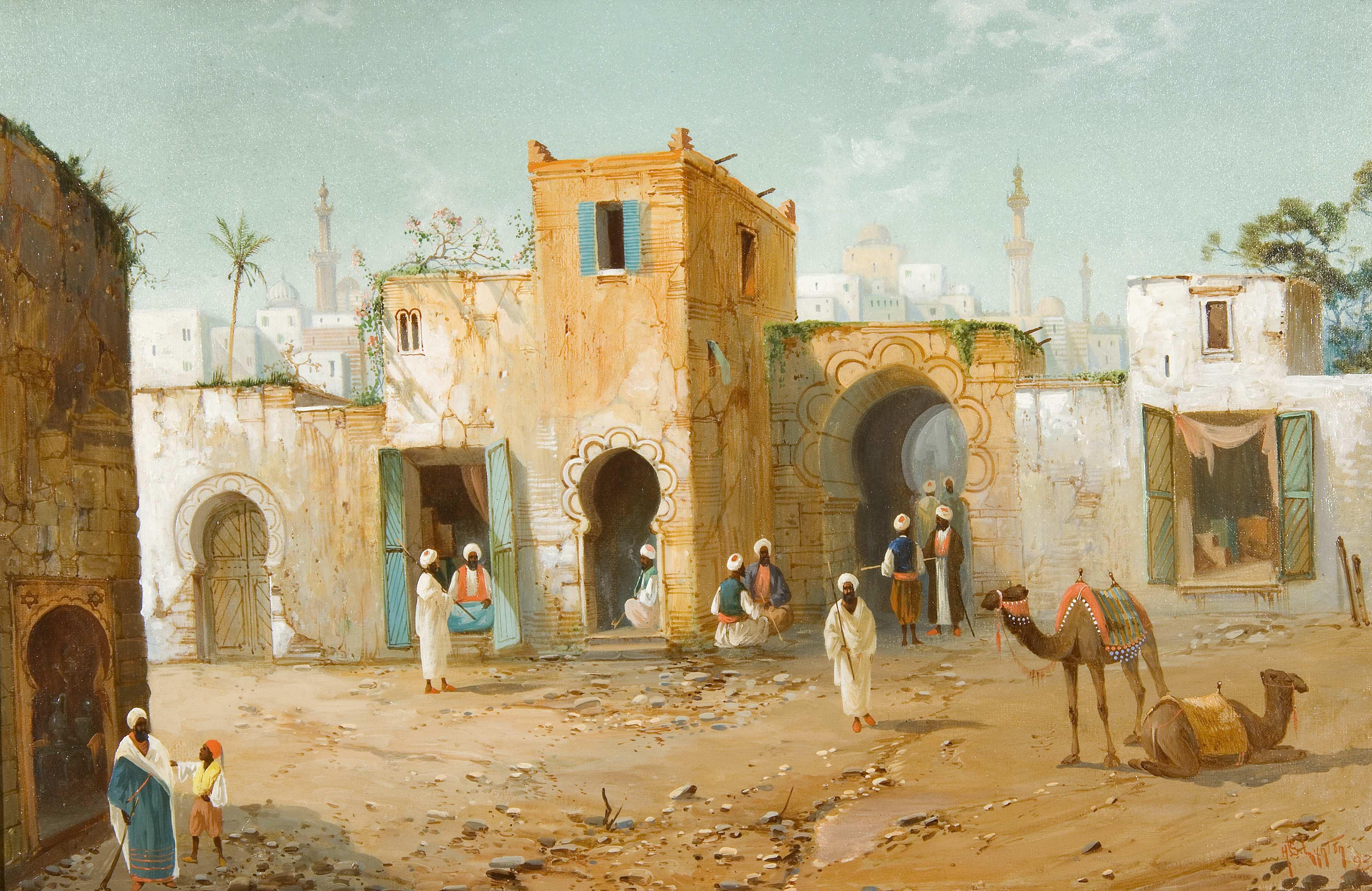



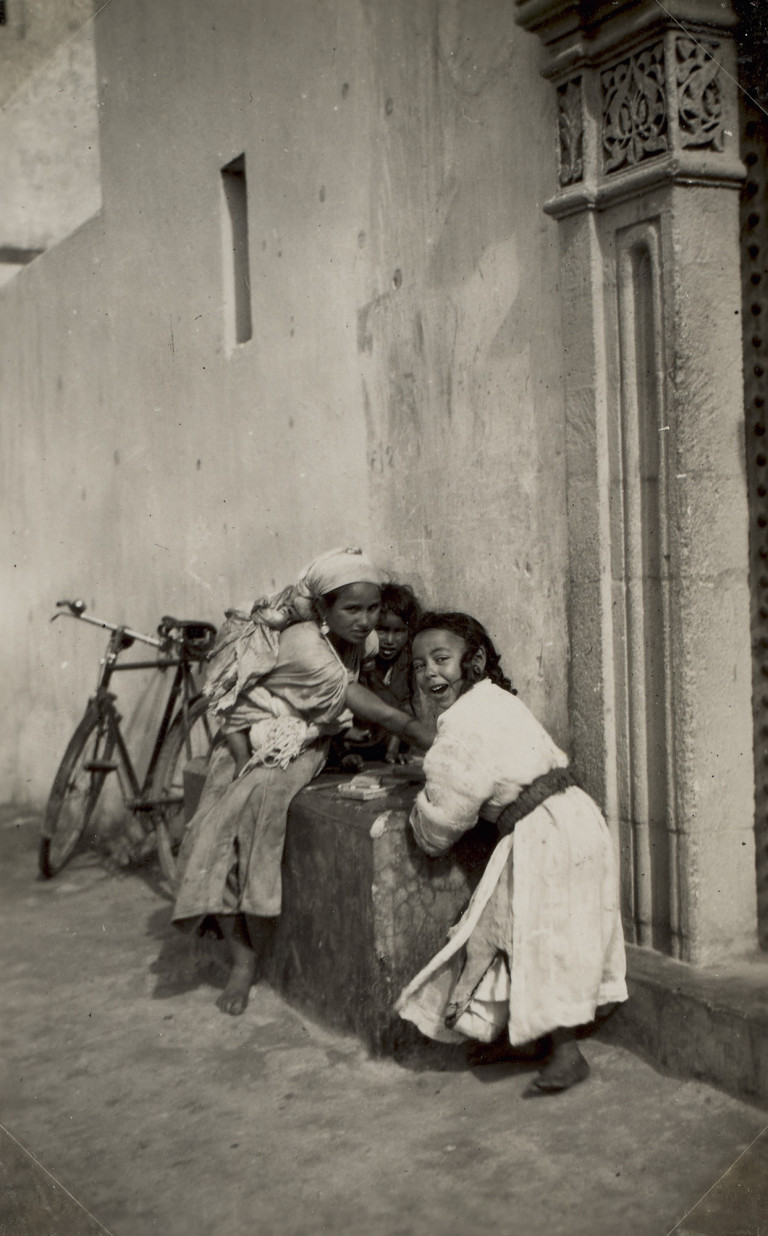
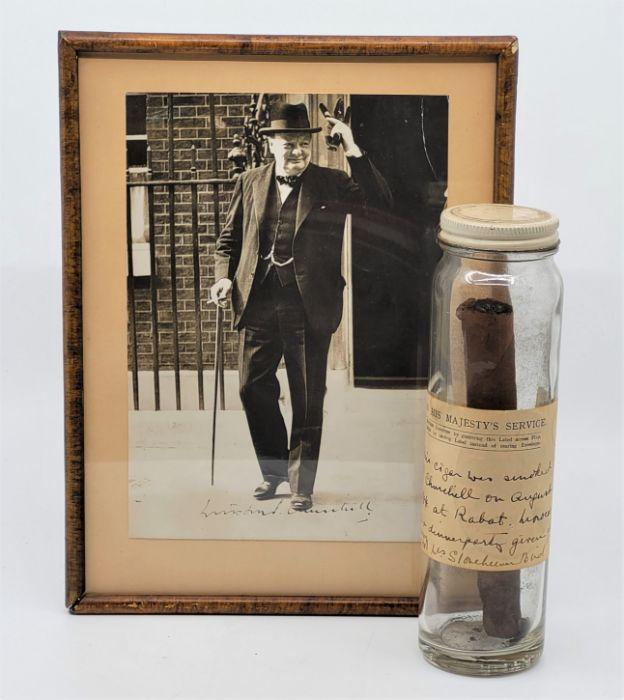
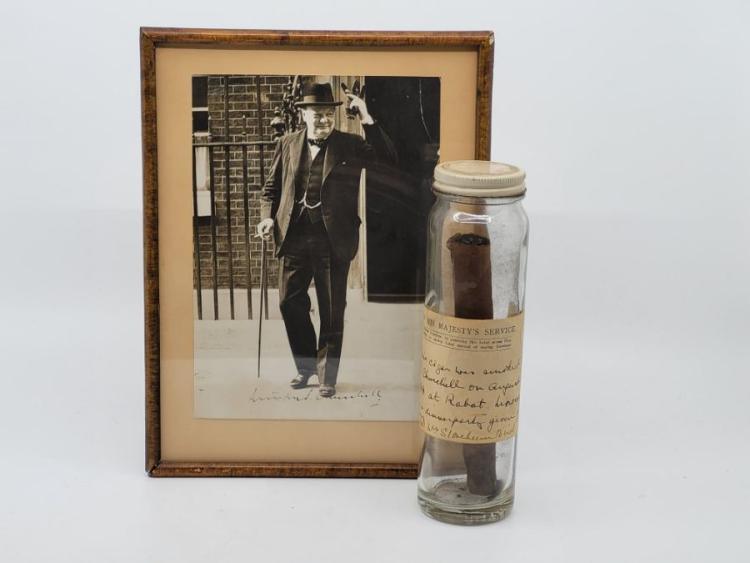
Try LotSearch and its premium features for 7 days - without any costs!
Be notified automatically about new items in upcoming auctions.
Create an alert